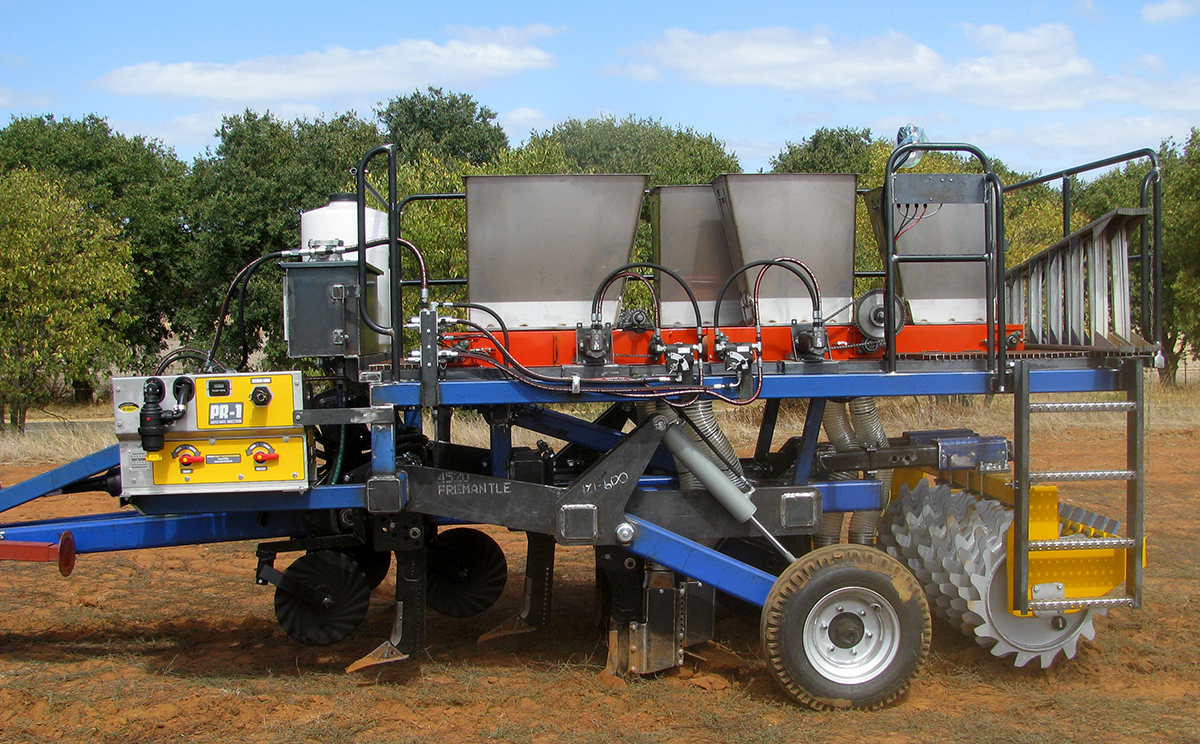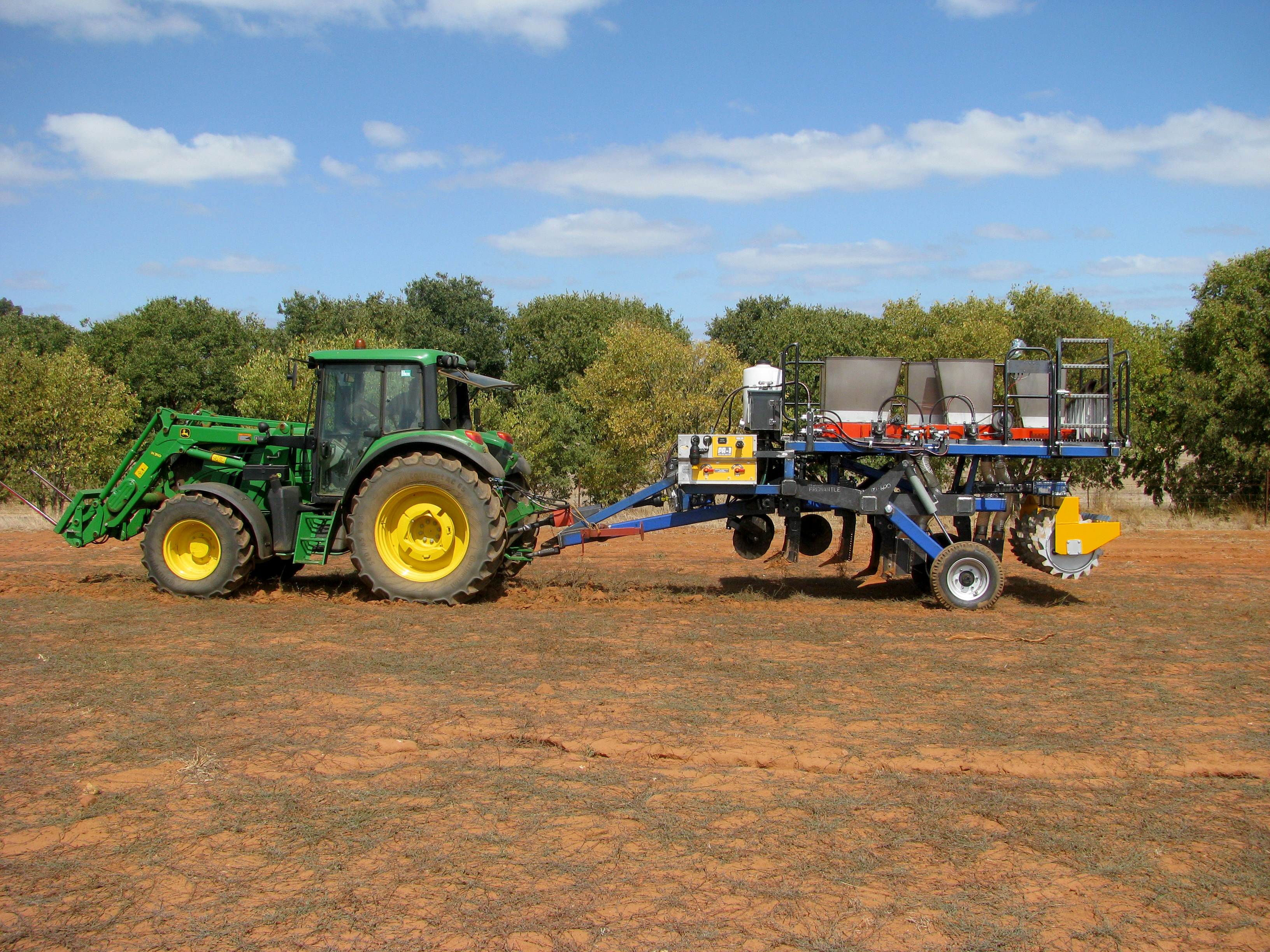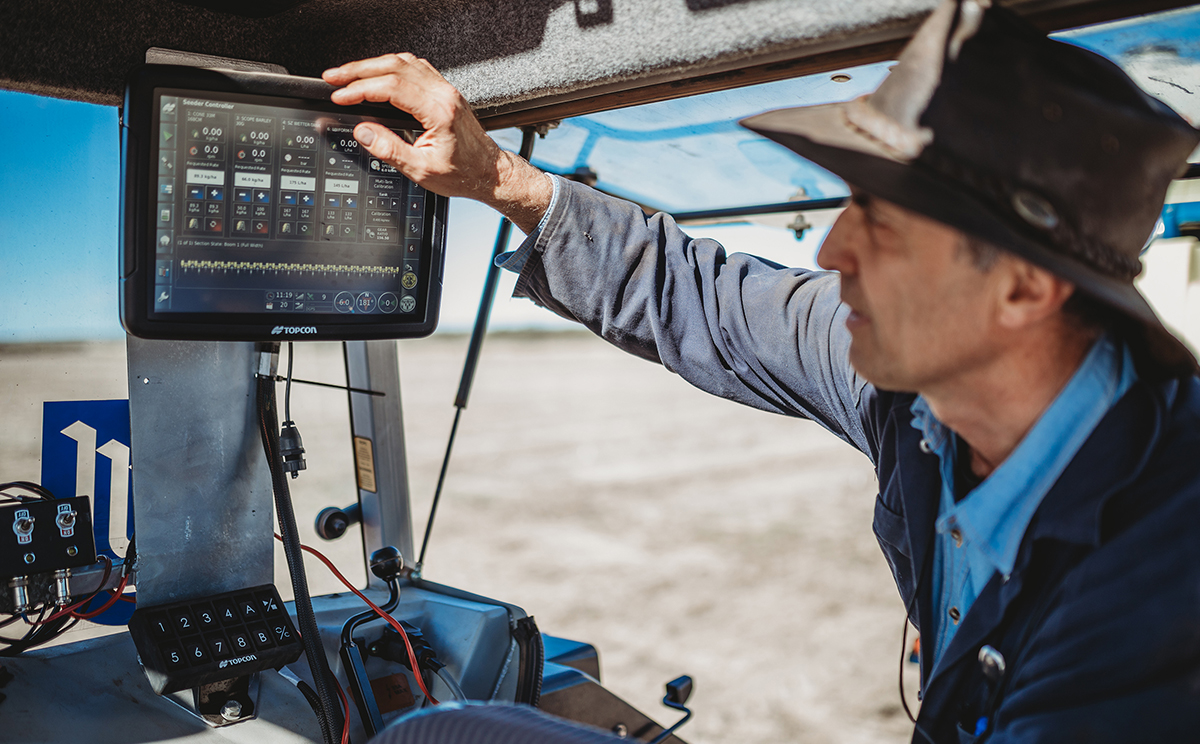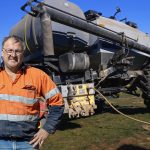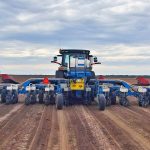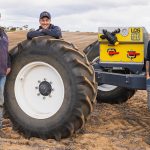LQS equipment integral to subsoil amelioration and crop seeding research
A research machine designed to test subsoil amelioration techniques has been equipped with liquid application technology from Liquid Systems (SA).
Developed in collaboration with the University of South Australia’s Agricultural Machinery Research and Design Centre (AMRDC), the Amendment Injection Subsoiler uses deep ripping tines to loosen subsoil while simultaneously injecting pelletised organic compost and liquid products at depth.
University of SA agricultural research engineer Dr Jack Desbiolles said the aim of the machine was to drastically change the potential of soil for the benefit of broadacre cropping.
“This specialised machinery is designed to investigate cost-effective subsoil amelioration strategies,” said Dr Desbiolles. “It’s a transformative operation to improve subsoils; we are trying to change the condition of the subsoil that is constrained by compaction, sodicity and low fertility.”
Images Below: Pre-testing the Amendment Injection Subsoiler in March 2018, using Liquid Systems’ PR-1 Pump & Control Module.
The plot-scale research machine includes three rip-lines spaced between 45cm and 60cm. Each rip-line is created by two tines, with a leading tine ripping about two thirds of the way into the profile to help reduce draft and the trailing tine reaching the full depth of up to half a metre. Pelletised organic compost or granular powders such as lime or gypsum are injected at up to two selected depths during the ripping process, while a combination of liquid products, are delivered via the PR-1 Module to up to three locations in the profile. A disc coulter controls the risk of residue build-up during the deep loosening operation.
Dr Desbiolles said the liquid products play an important role in balancing the organic inputs.
“The liquids give us the opportunity to balance the organic to mineral amendment ratios. For instance, the carbon (C) and nitrogen (N) ratio should often aim to match the natural levels of biology in the soil and not interfere with the access to soil N by the growing crop,” he said.
The AMRDC research team selected Liquid Systems (SA) technology after considering three manufacturers, basing their decision on value for money, with key aspects including product quality and technical support. Familiarity was also a consideration, as the team has used Liquid Systems (SA) equipment on their trial plot seeder for the past decade.
“Liquid Systems equipment was known technology to us. That’s always a good incentive,” said Dr Desbiolles. “We knew the quality was there and the back-up too.”
The modular design and flexibility of Liquid Systems (SA) technology made it a good fit for subsoil research which may require high volumes of liquid applied at set delivery points, deep in the profile.
Development of the subsoil research machine involved a number of manufacturers and suppliers, while the frame was co-developed with Agri-Bits, in Adelaide who also assembled the whole machine to full functionality. It was completed in March 2018 and has been used in various trials across Victoria and in South Australia’s Mid North and northern Yorke Peninsula. The GRDC funded research program is part of a collaborative project led by Dr Roger Armstrong, at Agriculture Victoria.
The AMRDC also conducts specialised cropping system research relying on a state-of-the-art, versatile plot seeder, which was custom designed and developed over the years to receive Liquid Systems’ triple Spiker modules. This upgrade enabled more effective research on the impact of precision seeding technology and strategies on no-till crop response. The plot seeder is set up to match commercial layouts and simulate a wide range of farmer practices at common sowing speeds such as guided row sowing and in-furrow liquid banding. With the direct support of TopCon Agriculture, granular and liquid metering is managed via a X35 monitor and twin Apollo seeder application controller technology, suitable for variable rate application and section-control simulations.
Image Below: Left, Technical Officer Dean Thiele and Dr Jack Desbiolles at Murlong, SA, March 2019 doing trials with the specialised research plot seeder using triple Spiker (2009 Liquid Systems’) Modules.
AMRDC’s cropping system trials have tested a variety of liquid products applied in-furrow including fertilisers, fungicides, inoculants and trace elements, as well as soil wetters and conditioners.
“The advantage of liquids rather than granular is that it is very easy to control and dispense at more exact locations in the profile and we can also easily mix products together, or where incompatible, simply co-locate them at the point of delivery,” said Dr Desbiolles. “Liquids are also dispensed in a continuous stream rather than the distinct application spots obtained with a granular form and so is more efficiently intercepted by a developing root system.
“The liquid option is also more compatible with low soil disturbance seeding systems, considered a positive under the zero-till philosophy.
Liquid Systems dispensing equipment allows us to be very flexible and opens doors to all these different liquid avenues, to apply a more targeted prescription based on what the crop needs in each soil environment.
“The modular design from Liquid Systems also makes it very easy to integrate with any machine. Liquid is easily and uniformly delivered to multiple points in the profile. We can reach right down the bottom, halfway up and at or near surface if we want. And with different applications, we might need a wide-ranging volume of liquid per hectare. It might be more than 1000 L/ha, depending on what organic input we’re trying to complement or as low as 30-50 L/ha with some common in-furrow applications.
“We need to have the ability to apply that volume of liquid through the one system, which is what Liquid Systems equipment allows us to do.
“It also gives us full control with the flow rates, so we can directly control how much is applied per hectare. That’s important. Some other systems use pressure-based control, but the flow rate can be affected by downstream back-pressure, including in-line filters and anti-drips. Here, our check calibrations show that the output remains constant throughout the trials.
“Looking at the future, we are investigating the benefits of seed singulation with winter grain crops, and within that, precision placement of both seeds and furrow inputs is even more critical and liquids will play a critical role to help maximise crop response.”
Image Below: Dr Jack Desbiolles setting the TopCon X35 Controller
Get a Quote
"*" indicates required fields

